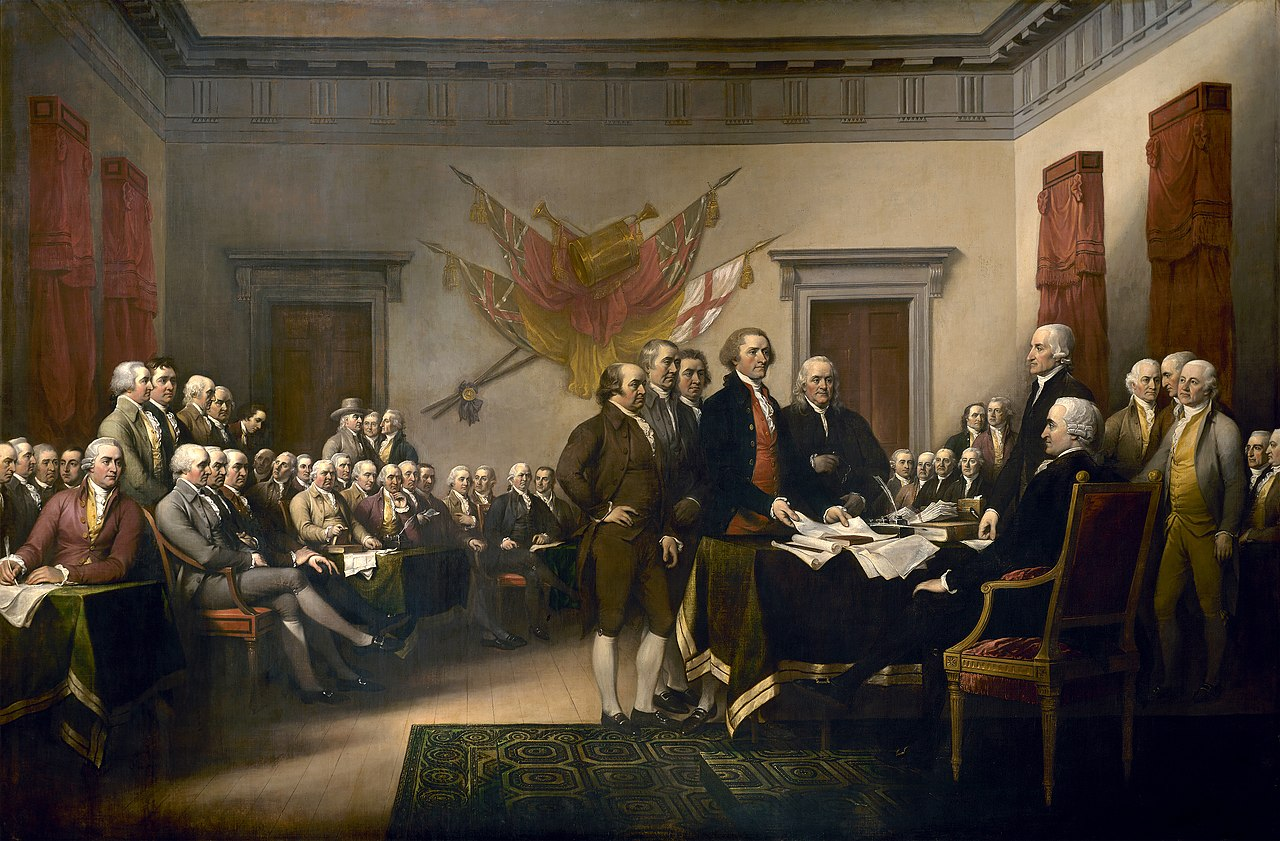More languages
More actions

The Statesian Revolution was a bourgeois revolution[1] by North American colonists against the Kingdom of Great Britain to establish the United States of America. It culminated in the Statesian Revolutionary War from 1775 to 1783. US founder John Adams estimated that a third of the settler population opposed the revolution, a third supported it, and another third were neutral.[2] The revolution killed between 50,000 and 160,000 people.[3]
Background
In 1763, the British monarchy banned settlement west of the Allegheny Mountains.[4] After the Quartering Act of 1765, 700 British soldiers began to occupy Boston in 1768. On March 5, 1770, British troops shot at protestors in the Boston Massacre. King George enacted another Quartering Act in 1774, allowing colonial governors to seize people's houses to give to soldiers.[3]
War
The war began in 1775, British soldiers fought colonist militias at Lexington and Concord, killing almost 125 people. On July 4, 1776, the Continental Congress declared independence from Britain.[3]
The rebels lost the first battles of the Revolutionary War, including Bunker Hill, Brooklyn Heights, and Harlem Heights. The war changed course when the rebels won a battle at Saratoga, New York in 1777. Benjamin Franklin negotiated an alliance with France, which blockaded the British and prevented them from receiving supplies and reinforcements. The Continental Army defeated the British at Yorktown, Virginia in 1781.
British commander John Murray of Dunmore offered to free slaves in Virginia who joined the British forces.[2] The British formed alliances with the Cherokee and Shawnee nations, and the Iroquois Confederacy split with the Mohawks and Senecas siding with the British, the Cayuga, Onondaga, and Tuscarora staying neutral, and the Christian Oneidas siding with the rebels.[5]
Mutinies
On January 1, 1781, troops from Pennsylvania near Morristown, New Jersey, killed their captain and began marching toward the Continental Congress in Philadelphia. George Washington told General Anthony Wayne not to use force and negotiated a peace in which half of the mutineers were discharged and the other half were given paid leave. Soon after, another mutiny of 200 men began in the New Jersey Line. This mutiny was quickly defeated and two of its leaders were executed.[2]
Results
Each of the U.S. states created new constitutions between 1776 and 1780. Some states reduced property requirements for voting and holding office, but Massachusetts increased them. After the British were defeated, a new colonial elite replaced the wealthy British loyalists.[2] After the Treaty of Paris, British troops continued to occupy 13 forts south of the Canadian border.[3]
References
- ↑ John Peterson (2011-12-14). "Class Struggle and the American Revolution" In Defense of Marxism.
- ↑ 2.0 2.1 2.2 2.3 Howard Zinn (1980). A People's History of the United States: 'A Kind of Revolution' (pp. 80–84). [PDF] HarperCollins. ISBN 0060194480
- ↑ 3.0 3.1 3.2 3.3 David Vine (2020). The United States of War: 'Succession' (pp. 82–8). Oakland: University of California Press. ISBN 9780520972070 [LG]
- ↑ Domenico Losurdo (2011). Liberalism: A Counter-History: 'What Is Liberalism?' (pp. 17–18). [PDF] Verso. ISBN 9781844676934 [LG]
- ↑ Roxanne Dunbar-Ortiz (2014). An Indigenous Peoples' History of the United States: 'Bloody Footprints' (pp. 72–78). ReVisioning American History. [PDF] Boston: Beacon Press Books.
